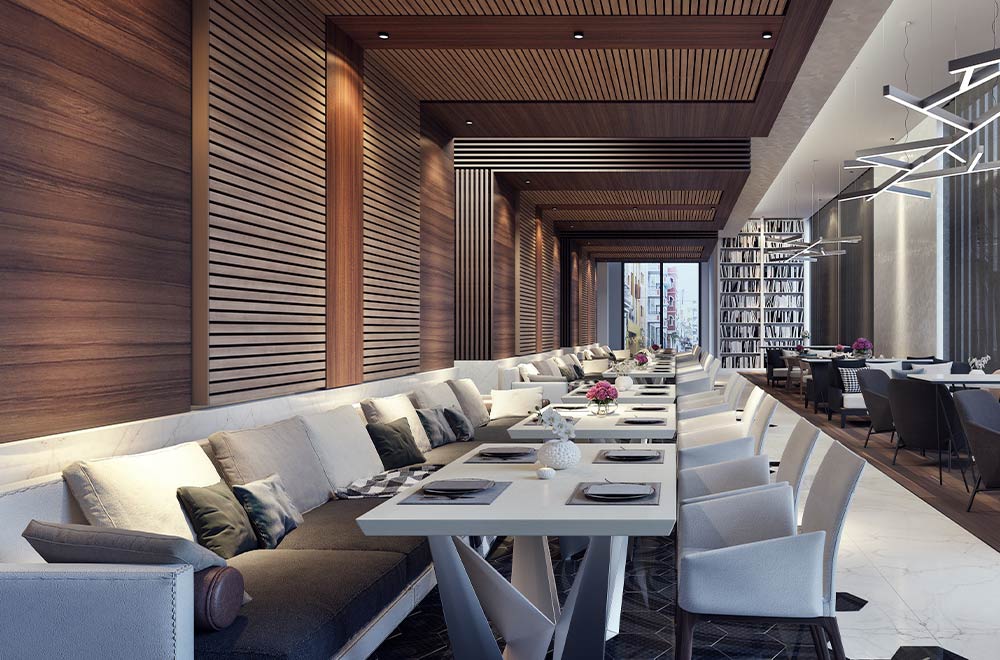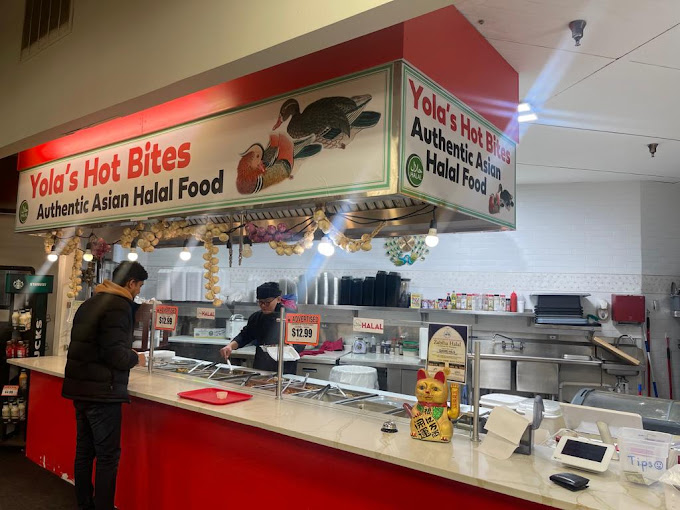Fine Dining Experience Islamabad: Delight In Lavish Cooking Joys
Fine Dining Experience Islamabad: Delight In Lavish Cooking Joys
Blog Article
Savor Authentic Oriental Food With a Pan-Asian Spin for a Culinary Journey
Starting a cooking trip through genuine Oriental food, improved with a Pan-Asian spin, offers a special opportunity to explore the abundant tapestry of tastes that specify the area's diverse cooking customs. This experience invites you to appreciate the elegant balance of preferences-- wonderful, salty, spicy, and sour-- balanced by fragrant natural herbs and flavors. Think of the innovative combination of Thai curry and ramen or the unexpected joy of sushi burritos. As you ponder these enticing recipes, consider the cultural stories and historical impacts that shape them, each bite offering a tale waiting to be found.

Discovering Pan-Asian Tastes
In the world of global gastronomy, Pan-Asian cuisine attracts attention for its remarkable variety and the harmonious interplay of tastes from various Asian cultures. This cooking technique celebrates the abundant customs and special active ingredients located across the continent, producing a tapestry of tastes that is both rewarding and fascinating. Key to Pan-Asian cuisine is its capability to stabilize different tastes-- sweet, salty, spicy, and sour-- while highlighting the quality and high quality of each active ingredient.
From the umami-rich soy sauce of Japan to the fiery chili peppers of Thailand, Pan-Asian food offers a considerable palette of tastes. These elements are typically incorporated in innovative ways, enhancing recipes with layers of intricacy. For example, the use of aromatic herbs such as lemongrass and cilantro, common in Vietnamese and Thai food, adds a revitalizing brightness to dishes, while the incorporation of coconut milk delivers a luscious, abundant structure.
The emphasis on fresh fruit and vegetables and aromatic spices makes sure that each dish is not only a feast for the palate yet also for the senses. Pan-Asian cuisine invites restaurants to embark on a cooking journey, checking out the substantial and differed landscapes of Oriental gastronomy with every bite.
Blend Meals to Try
While Pan-Asian food is commemorated for its standard flavors, the contemporary cooking landscape is increasingly accepting blend recipes that blend these traditional elements with influences from various other regions. This cutting-edge strategy not only honors the abundant heritage of Asian culinary arts yet also presents unique preference experiences that appeal to modern tastes.
A prime example of such a fusion recipe is the Korean-Mexican taco, where marinated bulgogi beef is covered in a cozy tortilla, covered with kimchi and a zesty gochujang-infused salsa. This combination weds the strong, savory flavors of Korea with the vibrant, fresh elements of Mexican food. Likewise, sushi burritos have acquired popularity, integrating the delicate creativity of Japanese sushi with the passionate, hand-held convenience of a burrito, usually including fusion ingredients like tempura shrimp and avocado with a drizzle of wasabi mayo.
Another noteworthy meal is Thai curry ramen, which instills the luscious, fragrant flavors of Thai curry into the comforting brew of traditional Japanese ramen, producing an unified mix that tantalizes the senses. These blend meals expand beyond plain uniqueness; they stand for a culinary discussion in between cultures, encouraging expedition and development worldwide of Pan-Asian cuisine.
Essential Components and Flavors
To absolutely value Pan-Asian food, one must understand the essential active ingredients and seasonings that form its foundation. This varied culinary style attracts from a rich tapestry of Asian practices, utilizing a harmonious mix of tastes and textures. Key active ingredients include soy sauce, fish sauce, and oyster sauce, which give a savory umami deepness important to Oriental meals. Corresponding to these are rice vinegar and mirin, providing a delicate acidity and sweet taste.
Aromatic components are essential, with garlic, lemongrass, and ginger being common across different Pan-Asian dishes. These ingredients supply a fragrant base that boosts the intricacy of flavors. Flavors such as star anise, cardamom, and cinnamon present heat and character, echoing impacts from regions like China and India.

Cooking Strategies and Tips
Understanding the art of Pan-Asian cuisine needs knowledge with its distinct cooking techniques, each adding to the lively tapestry of tastes this cooking practice is commemorated for. Central to these methods is the stir-fry, a fast cooking technique that preserves the dietary integrity and vibrant colors of ingredients. Making use of a wok, the stir-fry approach permits even warmth circulation, important for attaining the characteristic texture and flavor equilibrium of Pan-Asian dishes.
One more basic strategy is steaming, especially widespread in Chinese cuisine. This mild approach keeps the all-natural flavors and nutrients of components, making it perfect for seafood and veggies. Dumplings, a precious staple, commonly benefit from steaming, resulting in soft, delicious structures.
Barbecuing, likewise essential, imparts great smoky depths to dishes such as Oriental bulgogi or Japanese yakitori (asian fusion restaurant). This strategy commonly includes seasoning components, enabling tastes to permeate deeply prior to food preparation over an open flame or warm plate
Finally, understanding the art of stabilizing tastes-- pleasant, sour, salted, bitter, and umami-- is vital. Correctly layering these elements can raise a dish from normal to amazing, supplying a complicated and pleasing cooking experience that symbolizes the significance of Pan-Asian cuisine.
Dining Experiences Worldwide
Around the have a peek at this website world, Pan-Asian cuisine uses an unparalleled dining experience, commemorated for its abundant tapestry of flavors and lively presentations. This cooking sensation has actually gone beyond cultural boundaries, capturing the hearts and tastes of food fanatics worldwide. In multicultural cities like New York, London, and Sydney, Pan-Asian restaurants function as fusions where culinary traditions from Thailand, Japan, China, and beyond converge, supplying diners with a diverse mix of recipes that highlight the region's variety.
The international allure of Pan-Asian cuisine hinges on its capability to provide both credibility and innovation. Chefs skillfully wed conventional ingredients such as lemongrass, soy sauce, and miso with modern strategies, leading to meals that are both acquainted and refreshingly new. This combination enables diners to embark on a culinary trip that values heritage while accepting modernity.
Furthermore, eating experiences are elevated via thoughtfully developed atmospheres that seafood buffet near me reflect the ethos of Pan-Asian aesthetic appeals. From minimal Japanese-inspired interiors to vibrant Thai-themed spaces, each restaurant offers an unique ambiance that matches the culinary offerings. Consequently, customers are not simply eating a meal however partaking in a cultural experience, making Pan-Asian eating a genuinely worldwide sensation.
Verdict
The exploration of Pan-Asian cuisine offers a profound understanding of the detailed interplay of tastes and cooking customs throughout Asia. By welcoming blend dishes such as Thai curry ramen and sushi burritos, the cooking journey not just highlights the flexibility of standard components yet also showcases innovative modern techniques. This gastronomic journey, improved by necessary seasonings and cooking methods, provides an unique chance to value the social variety and cooking artistry that specify Pan-Asian food on a global range.
Beginning on a culinary trip through genuine Oriental cuisine, boosted with a Pan-Asian twist, provides an unique possibility to discover the rich tapestry of flavors that specify the region's varied cooking traditions.In the realm of international gastronomy, Pan-Asian cuisine stands out for its exceptional diversity and the harmonious interaction of flavors from numerous Asian societies. Trick to he said Pan-Asian cuisine is its ability to stabilize different tastes-- pleasant, salty, spicy, and sour-- while highlighting the quality and quality of each ingredient.

Report this page